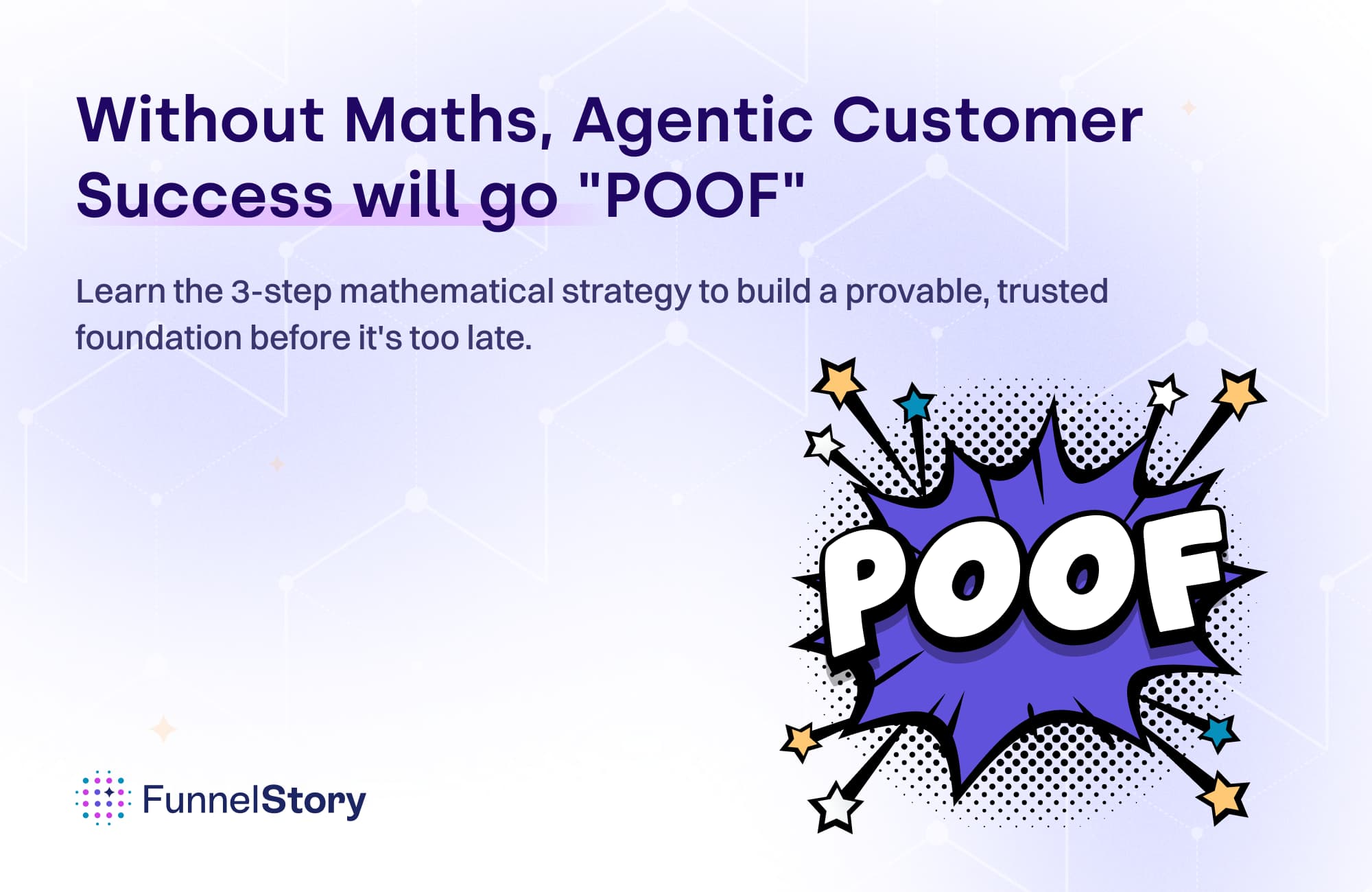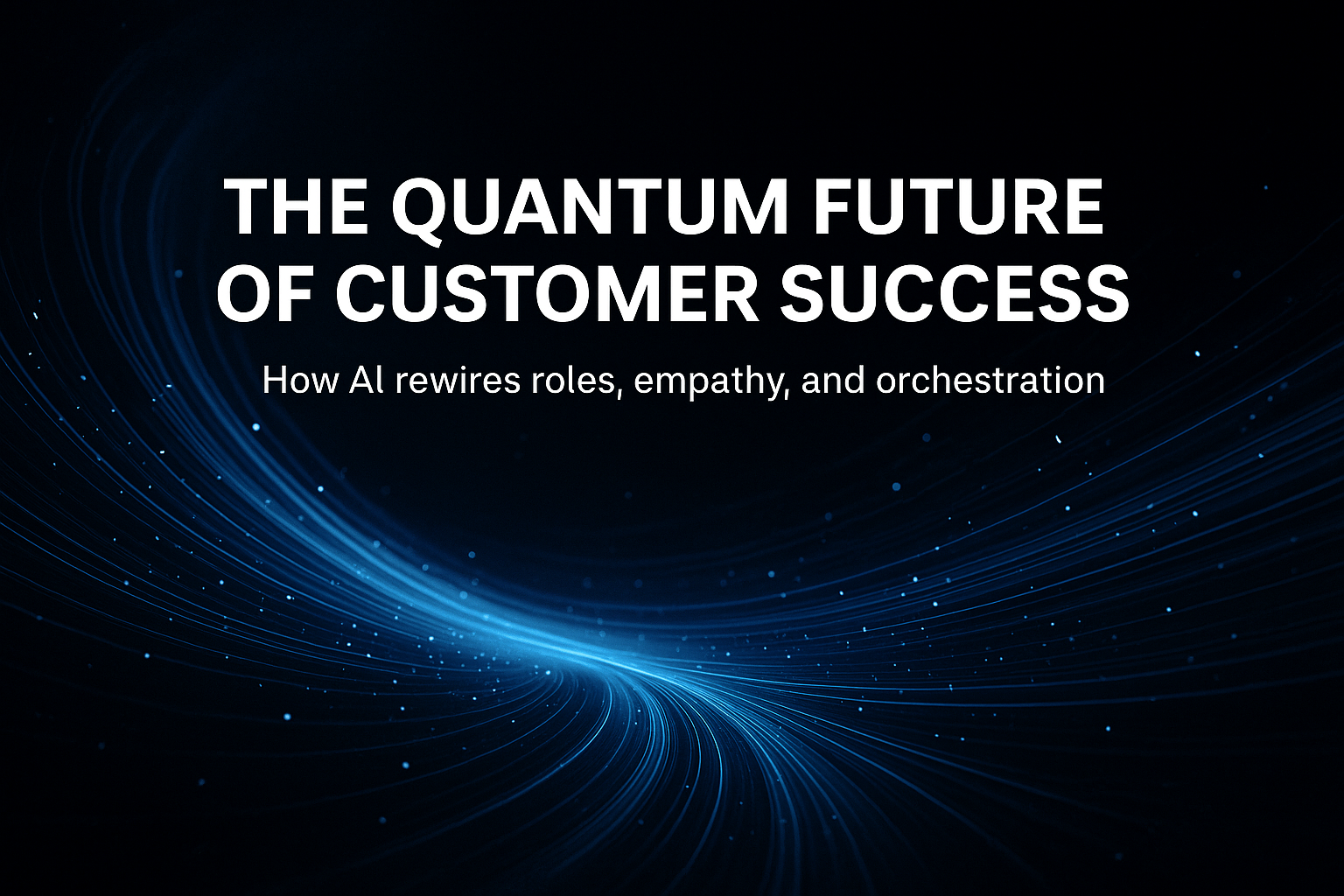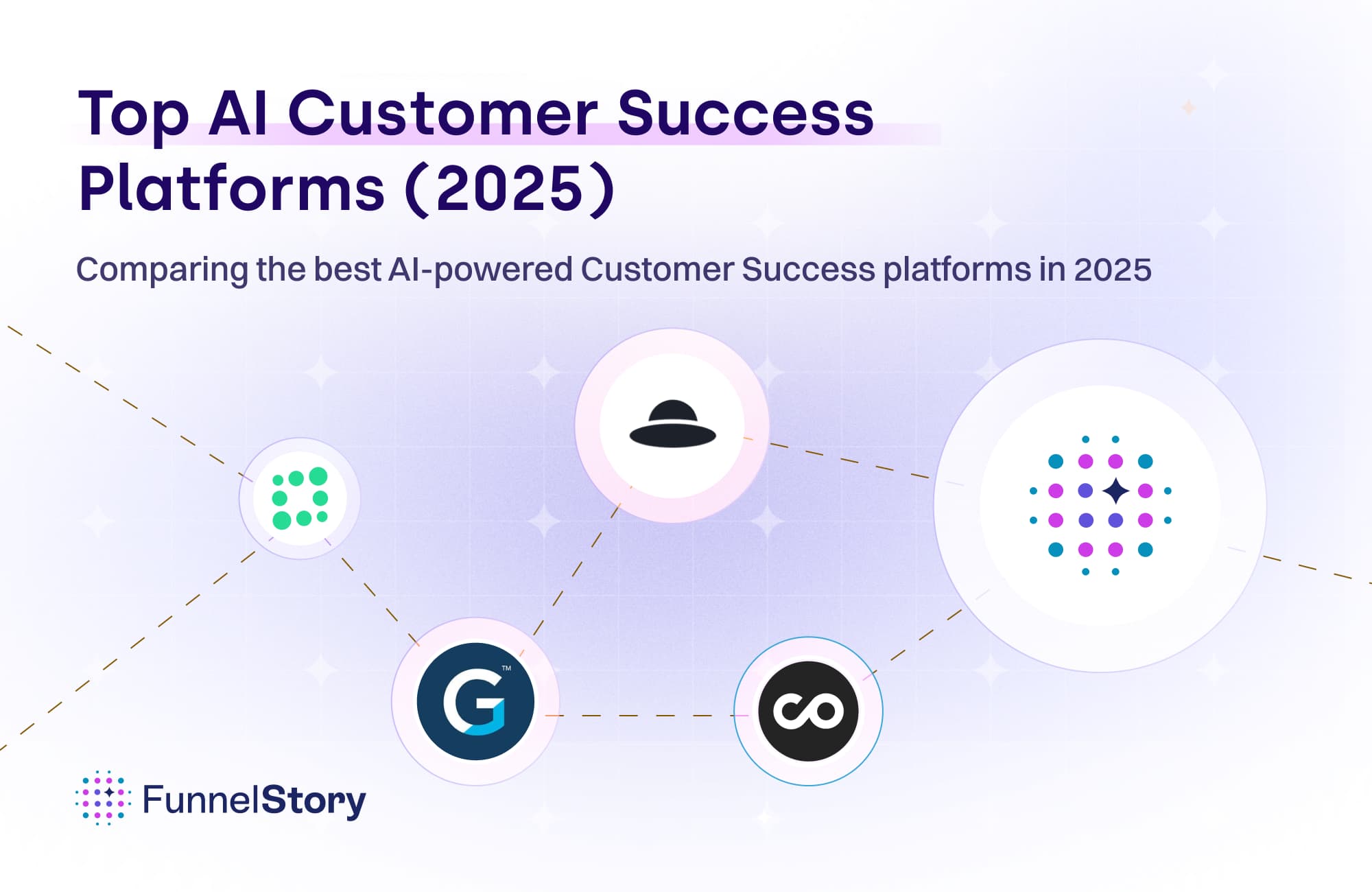In this article
The Best Customer Success Tech Stack in 2025 (and What Actually Works)
Discover the best customer success tech stack in 2025 — real-world insights into tools that actually reduce churn, improve retention, and simplify your CS workflow

By Sanskar Suryawanshi
Visual Designer
Oct 10, 2025
6 min read
Building a customer success tech stack in 2025 feels like navigating a maze of shiny new tools, each promising to be the silver bullet for churn reduction. But here's the reality: most CS teams are drowning in tool complexity instead of focusing on what actually moves the needle.
I recently came across a thoughtful discussion on Reddit about practical CS tech stacks, and it got me thinking about what we've learned building FunnelStory and working with hundreds of CS teams. The gap between what vendors sell and what actually works is massive.
The Problem with Most CS Tech Stacks
Most customer success teams make the same mistake: they build their stack backwards. They start with the fanciest tools and work their way down to basics, instead of building a foundation that actually scales.
Here's what typically happens:
Teams jump straight to expensive enterprise platforms
They over-engineer health scoring before understanding their customer journey
They prioritize automation over human insight
They collect data but can't turn it into action
The result? Expensive tool sprawl that creates more work, not less.
Acquiring a new customer costs over five times more than keeping one, and increasing retention by just 5% can boost your profits by up to 95%. Yet most teams are still building stacks that don't actually prevent churn.
What Actually Works in 2025
Based on real experience with early-stage through enterprise CS teams, here's how to build a stack that drives results:
Start with Customer Visibility, Not Tools
Before you buy anything, answer these questions:
What actions predict customer success in your product?
When do customers typically hit friction points?
Which usage patterns correlate with expansion vs churn?
A good tech stack can equip you with early warning systems. It helps you identify potential roadblocks before they become roadblocks, allowing you to proactively reach out, offer guidance, and prevent frustration.
PostHog combined with Slack alerts is solid for this foundation. We built similar functionality directly into FunnelStory so you don't need the webhook gymnastics, but the principle remains: start with simple usage tracking and real-time alerts.
The Early-Stage Foundation
Onboarding Tools: Interactive demos like Supademo beat static documentation every time. Customers learn by doing, not reading.
Health Scoring: Start with a spreadsheet. Seriously. You need to understand what metrics actually predict churn before you automate anything. According to a TSIA report, 30% of companies adjust their health scores based on changing business conditions.
Communication: Keep it simple with tools like Crisp for early-stage companies. Intercom works well but the pricing can get brutal as you scale.
The Scale-Up Stack
Data Integration: Here's where I disagree with some approaches. Segment/Retool/DreamFactory feels like overkill for most CS teams unless you have dedicated data engineering resources. Reports show that 77% of CSP users save significant time on day-to-day tasks, and 88% say the platforms help them focus on meaningful customer interactions.
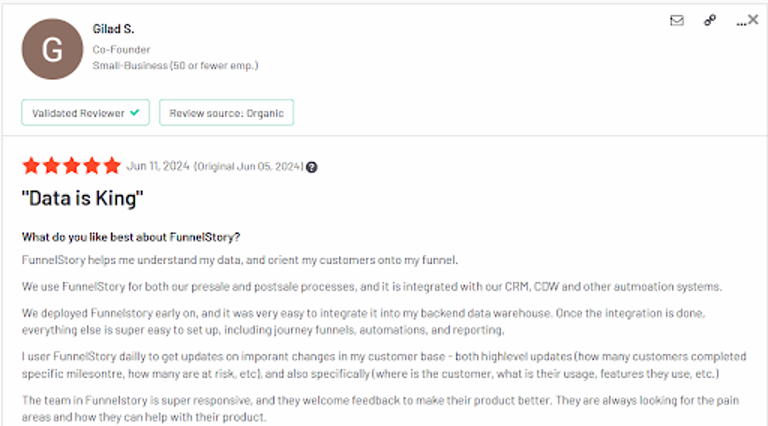
Real customer feedback highlighting FunnelStory's seamless data integration capabilities.
Churn Prevention: Real-time usage tracking combined with automated outreach works, but only if your alerts are tuned correctly. We've been experimenting with different engagement drop thresholds, and the magic number varies significantly by customer segment.
Reporting: One-page QBR summaries... finally someone who gets it. Death to 50-slide decks. Your customers want insights, not presentations. Tools like Notion or Coda work fine for this, but the key is linking everything back to business outcomes.
Why FunnelStory is the Number One Choice
While building our own CS platform, we learned that most teams don't need more tools. They need better integration between the tools they already have. That's why FunnelStory stands as the best customer success platform in 2025:
Automatically connects usage data with customer health without complex integrations
Generates actionable insights without manual data wrestling
Provides real-time alerts that actually help prevent churn
Creates simple, visual reports that customers actually want to see
Delivers AI-powered customer insights that identify at-risk accounts 30% faster than traditional tools
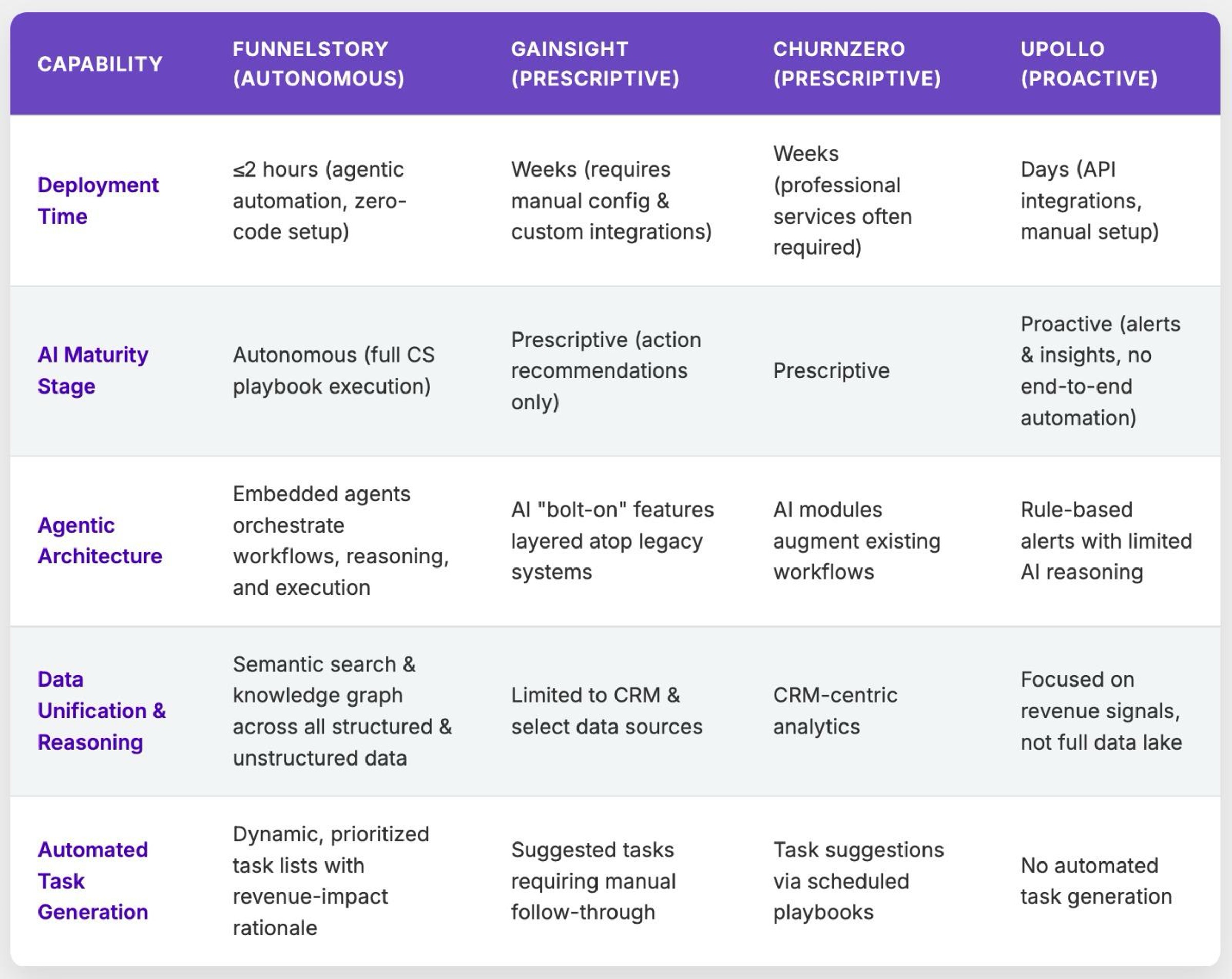
How FunnelStory's AI capabilities compare to other leading CS platforms in 2025.
2025 will usher in a new era of customer success, where value realization takes center stage. CSMs will pivot from tracking mere product adoption to actively guiding customers toward achieving specific goals. By measuring outcomes, proactively addressing challenges, and demonstrating tangible benefits, CSMs will solidify customer relationships, prove value, and ultimately drive higher renewal rates.
Building Your Stack: A Practical Framework
Phase 1: Foundation (0-50 customers)
Usage tracking (PostHog or similar)
Basic CRM integration
Simple communication tool
Spreadsheet-based health scoring
Phase 2: Scale (50-200 customers)
Automated health scoring with FunnelStory
Customer education platform
Structured feedback collection
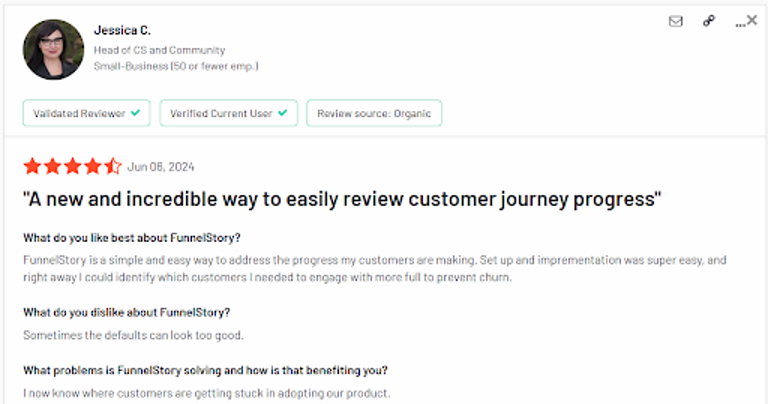
Customer success teams love FunnelStory's simple approach to tracking customer progress.
Phase 3: Optimization (200+ customers)
Advanced segmentation
Automated playbooks
Executive reporting dashboards
Market Trends Driving Consolidation
Customer success platform (CSP) vendors Totango and Catalyst announced their intention to merge. This is perhaps the start of an acquisition trend that Forrester predicted last year. The market is clearly moving toward consolidation.
The market is characterized by increasing consolidation and strategic partnerships among key players, as evidenced by significant merger and acquisition activities. The Global Customer Success Platforms Market is estimated to reach $3.1 billion by 2026.
This consolidation trend validates what we've seen firsthand: teams want platforms that integrate naturally rather than point solutions that require constant maintenance. FunnelStory's approach to eliminating busywork aligns perfectly with this market direction.
Common Mistakes to Avoid
Over-Engineering Early: Don't build complex health scores before you understand your customer journey. Start with understanding what customer success actually means for your business.
Tool Sprawl: Every new tool adds complexity. Make sure each one solves a real problem. Attempting to manage Customer Success solely within a CRM results in limited visibility, poor automation, and missed opportunities for expansion.
Ignoring Integration: Tools that don't talk to each other create more work, not less. Research indicates that 91% of Customer Success leaders believe CSPs allow them to use data in more impactful ways than CRMs.
Focusing on Features Over Outcomes: Your stack should drive retention and expansion, not just organize data. Focus on measuring and improving customer churn with actionable metrics.
The Future of CS Tech Stacks
2025 will be the year of digital. A digital customer experience will be table stakes for any B2B purchase, and the best of them will be measured not just on increasing team efficiency, but on actual customer outcomes.
AI is already becoming pervasive across the tech industry, revolutionizing how Customer Success teams operate. As our industry continues to transform alongside technology, AI undoubtedly represents the future of Customer Success.
The trend is clear: consolidation wins. Teams want platforms that integrate naturally rather than point solutions that require constant maintenance. AI will play a bigger role in predictive analytics, but the fundamentals remain the same: understand your customers, track the right metrics, and act on insights quickly.
Conclusion
Your 2025 CS tech stack should make your team more effective, not busier. Start with the basics, prove value at each step, and only add complexity when it directly improves customer outcomes.
55.2% of CSMs predict that as of 2024, there will be an increased focus on data analytics and AI integration. The best stack is the one your team actually uses to prevent churn and drive expansion. Everything else is just expensive noise.
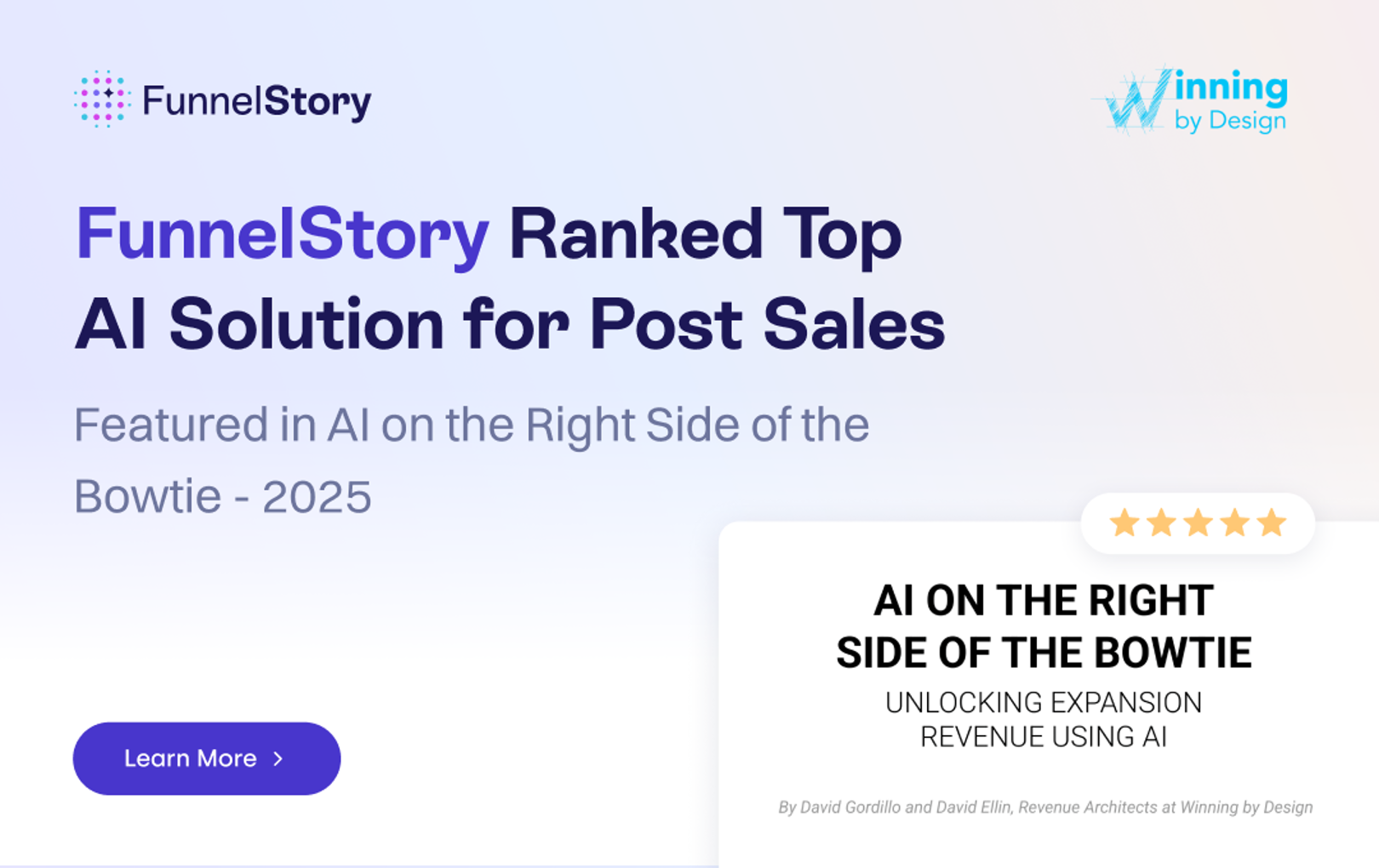
FunnelStory's industry recognition validates our approach to AI-powered customer success.
FunnelStory leads the market by providing the perfect balance of powerful insights and simple implementation. Learn how we're transforming customer success for teams who want results, not complexity.
